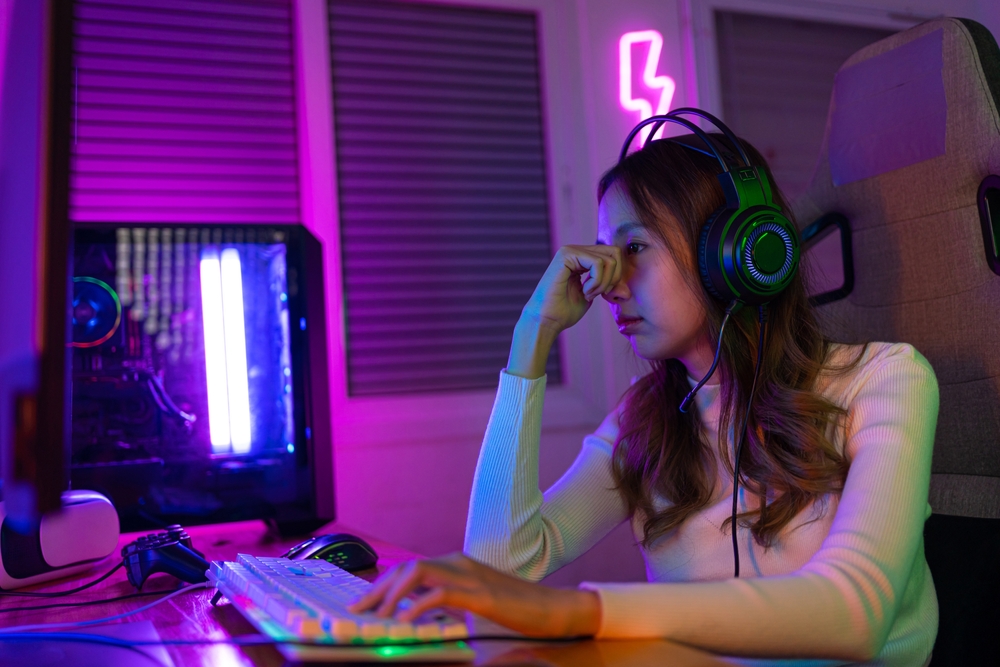
Blue light is a type of light with a short wavelength, which means it produces higher amounts of energy. We're exposed to it by the sun, but we also receive a significant amount from our digital devices, such as smartphones, tablets, computers, and televisions.
Understanding the nature and the effects of blue light is crucial in our modern world, where we are constantly surrounded by digital screens. It is not only about being informed but also about learning how to protect ourselves from potential harm.
How Blue Light Impacts Sleep
One of the primary concerns about excessive blue light exposure is how it impacts sleep. Our bodies have internal clocks – known as circadian rhythms – that regulate when we feel awake and when we feel sleepy. These rhythms are sensitive to light and darkness. During the day, blue light exposure can help keep us awake and alert. However, exposure to blue light in the evening can trick our brains into thinking it's still day, disrupting our sleep patterns.
Research has shown that exposure to blue light suppresses the production of melatonin, a hormone that influences circadian rhythms. More specifically, our eyes contain a sensor that detects when it's night or day. If we are exposed to blue light, this sensor becomes confused, leading to lower melatonin levels and disrupted sleep.
The impact of this can be significant. Poor sleep quality or lack of sleep can lead to various health issues, such as obesity, diabetes, and cardiovascular disease. It can also affect our mental health, leading to issues such as depression and anxiety. Understanding how blue light impacts sleep is crucial for maintaining overall health and well-being.
The Science Behind Blue Light and Eye Health
Beyond disrupting sleep patterns, too much exposure to blue light can also affect our eye health. When we talk about blue light on eye health, the primary concern is digital eye strain or computer vision syndrome. Symptoms can include dry and irritated eyes, blurred vision, eye fatigue, and headaches.
The high energy and short wavelength of blue light scatter more easily than other visible light. This un-focused visual "noise" reduces the contrast and can contribute to digital eye strain. Especially, when you are staring at digital screens for a long time, which is a common scenario in our digital age.
Practical Ways to Reduce Blue Light Exposure
Given the potential impacts on sleep and eye health, it's crucial to find practical ways to reduce blue light exposure. One of the first and most obvious is to limit the use of digital devices, especially in the evening. Consider implementing a digital curfew, where you stop using all digital devices a couple of hours before bed.
Make use of the 'night mode' settings on your devices, which reduce the amount of blue light emitted. Also, consider the lighting in your environment. Opt for warm, dim lighting in the evening to signal to your body that it's time to wind down and prepare for sleep.
Taking regular breaks from looking at a screen can also help to prevent eye strain. The 20-20-20 rule is a good one to follow. Every 20 minutes, look away from your screen and at something 20 feet away for 20 seconds. This gives your eyes a chance to rest and can help to reduce eye strain.
There are also a number of products on the market designed to help block blue light. These include blue light blocking glasses, which have lenses that block or filter out the blue light from digital screens. They can be worn when using digital devices, especially in the evening, to help prevent sleep disruption and eye strain.
Maintaining Your Eye Health in the Digital Age
Being aware of the impacts of blue light and taking proactive steps to manage exposure is an important part of living a healthy lifestyle in our increasingly digital world. Consider how you can implement these strategies in your daily routine.
For further insights into blue light and its impact on sleep and eye health, visit Eye Check Health and Vision at our office in East Petersburg, Pennsylvania. Please call (717) 500-2962 to schedule an appointment today.





